The Sustainable City Year Program (SCYP) is moving to Central Oregon, selecting Redmond for the 2015-16 academic year. University of Oregon students will work on more than twenty projects with the City of Redmond during the year, beginning this month when students from a bicycle transportation planning course tour the city to research existing infrastructure.
“The UO’s Sustainable Cities program has become an international example for a comprehensive outreach, research, [and] learning model,” said Frances Bronet, UO acting senior vice president and provost. “In addition to helping cities become more sustainable and livable, our students, critically engaged citizen-scholars, are solving real-life problems and working alongside experts in their fields.”
The Sustainable Cities Initiative (SCI) is a cross-disciplinary organization at UO that promotes education, service, public outreach, and research on the design and development of sustainable cities. The Sustainable City Year Program has been adapted by nearly twenty American universities and other countries.
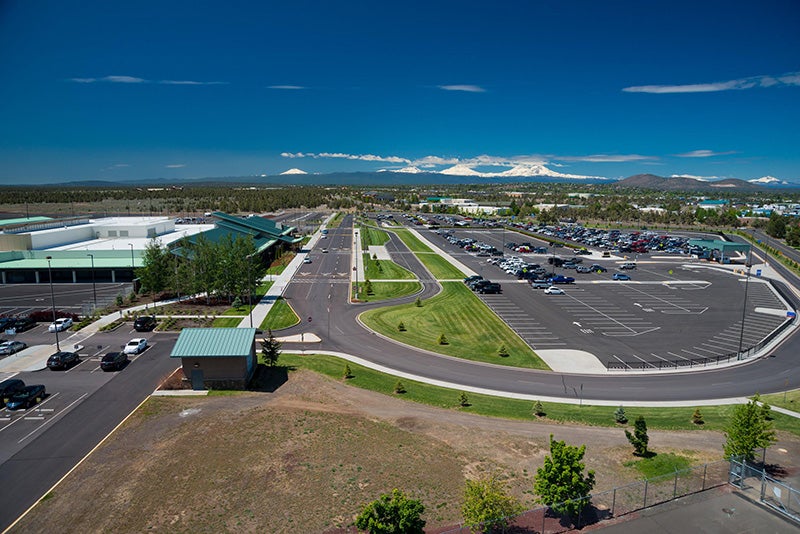
Above: Some of the projects students will work on include developing design and landscaping plans for Redmond Municipal Airport, shown here.
"Redmond will be our first SCYP city east of the Cascades and we are thrilled about the partnership,” said Marc Schlossberg, SCI codirector. “Redmond's application made it clear that they are interested in sustainability from a wide variety of perspectives and city functions and that they have put together a broad team of community partners for us to engage with. It is clear that Redmond is serious about moving the dial on sustainability and we are developing an impressive list of projects with them. It is going to be a great year."
Now in its sixth year, SCYP links UO students with an Oregon city, county, special district, or partnership of governments for an entire academic year. Each year, the SCYP partner receives assistance with projects centered on sustainability through the work of student classes across the university. In a typical year, more than 400 students from twelve disciplines across thirty classes work on twenty partner-directed projects. At the end of the year, more than 40,000 student hours of work will have been devoted to helping a local entity transition to a more sustainable future.
“Based on the past partnerships with Medford, Springfield, Salem, and Gresham, we are confident that this year of partnership will provide meaningful opportunities for students while helping Redmond move its own sustainability interests forward successfully,” said Nico Larco, SCI codirector.
Some of the projects students will work on include: downtown revitalization, improvement of the U.S. Highway 97 corridor, creating street tree programs, developing design and landscaping plans for Redmond Municipal Airport, and establishing a Cascadia emergency preparedness plan.
"We are excited by the tools and resources the SCYP partnership brings to the community of Redmond,” said Keith Witcosky, Redmond city manager. “It creates an important east-west geographic bridge across Oregon and does so in a way that saves the city hundreds of thousands dollars if we were going to secure similar services through private consultants."
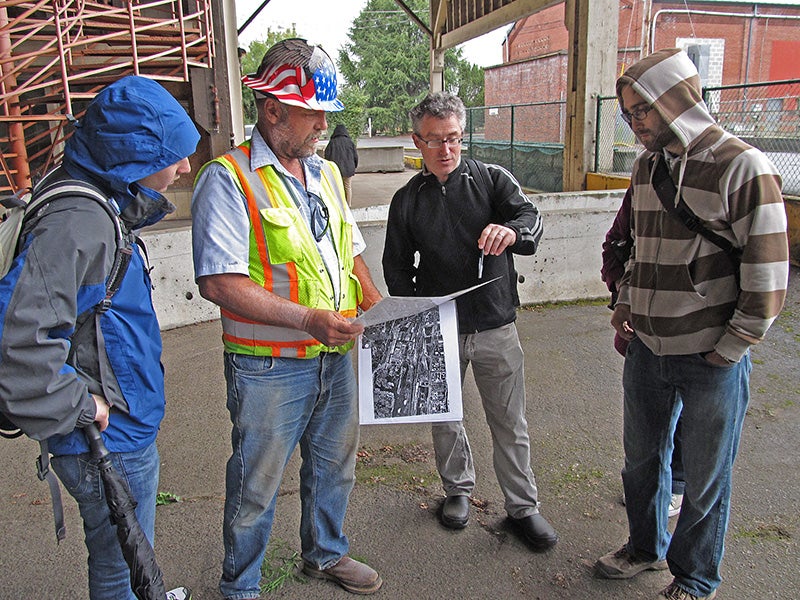
Above: Students (far left and far right) along with Acting Dean and Associate Professor Brook Muller (in black) meet with a City of Springfield staff member to examine redesign options for the Booth-Kelly industrial site during the SCYP in Springfield in 2012.
The Sustainable City Year Program will get a head start in Redmond when students from Schlossberg’s bicycle transportation planning course visit the city to research existing bicycle infrastructure. The students will visit on April 8 and be led on a tour of Redmond by city staff.
“This SCYP partnership helps us kick-start initiatives that are critical to our growing community,” Witcosky said. “More importantly, it allows us to harness the intellectual capital inherent in a campus of more than 20,000 students and teachers. Redmond's projects will reflect new ideas, fresh perspectives, and gain renewed energy."
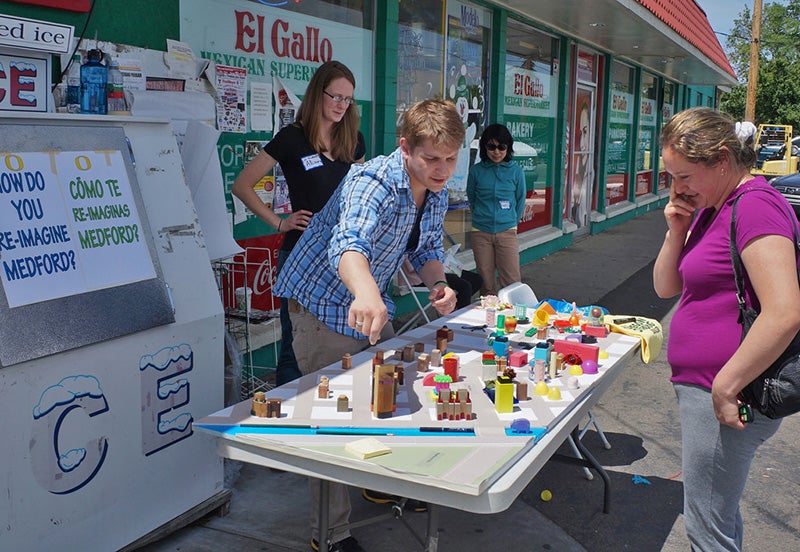
Above: Students in Assistant Professor Gerardo Sandoval's “Public Engagement with Diverse Communities” class lead a community envisioning workshop designed to engage Latino families. The workshop was held outside a Mexican supermarket.
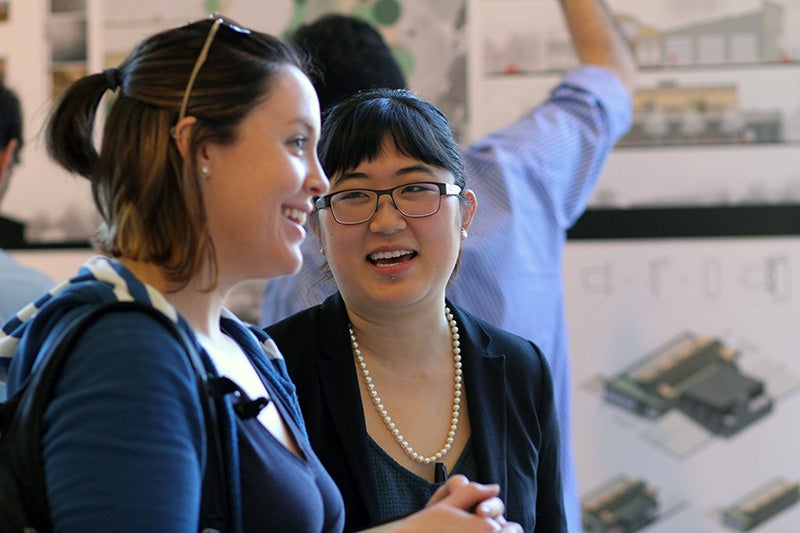
Above: Students in Associate Professor Virginia Cartwright's architecture studio propose designs for several new fire facilities in the City of Medford during the SCYP Medford in winter 2014.
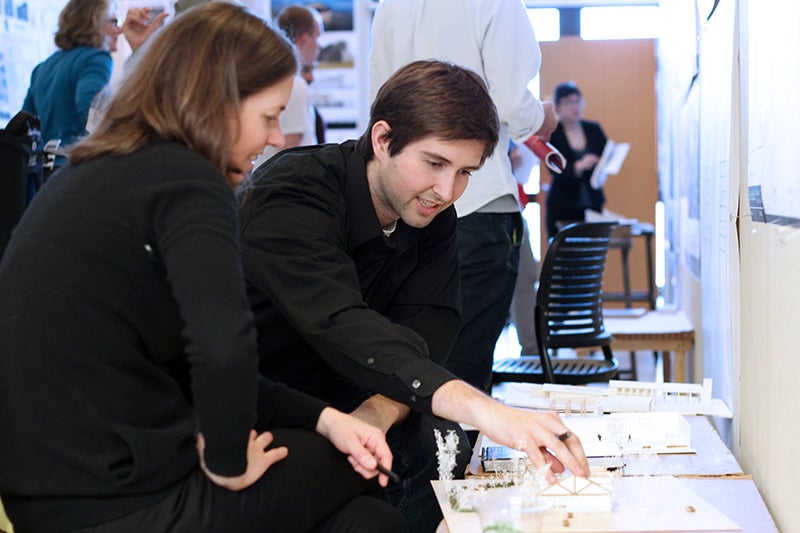
Above: Students in Cartwright's class discuss designs at their studio review.
